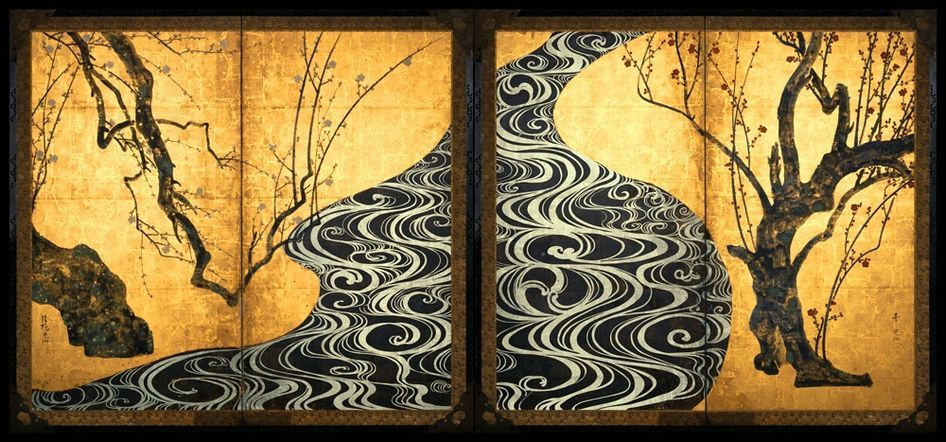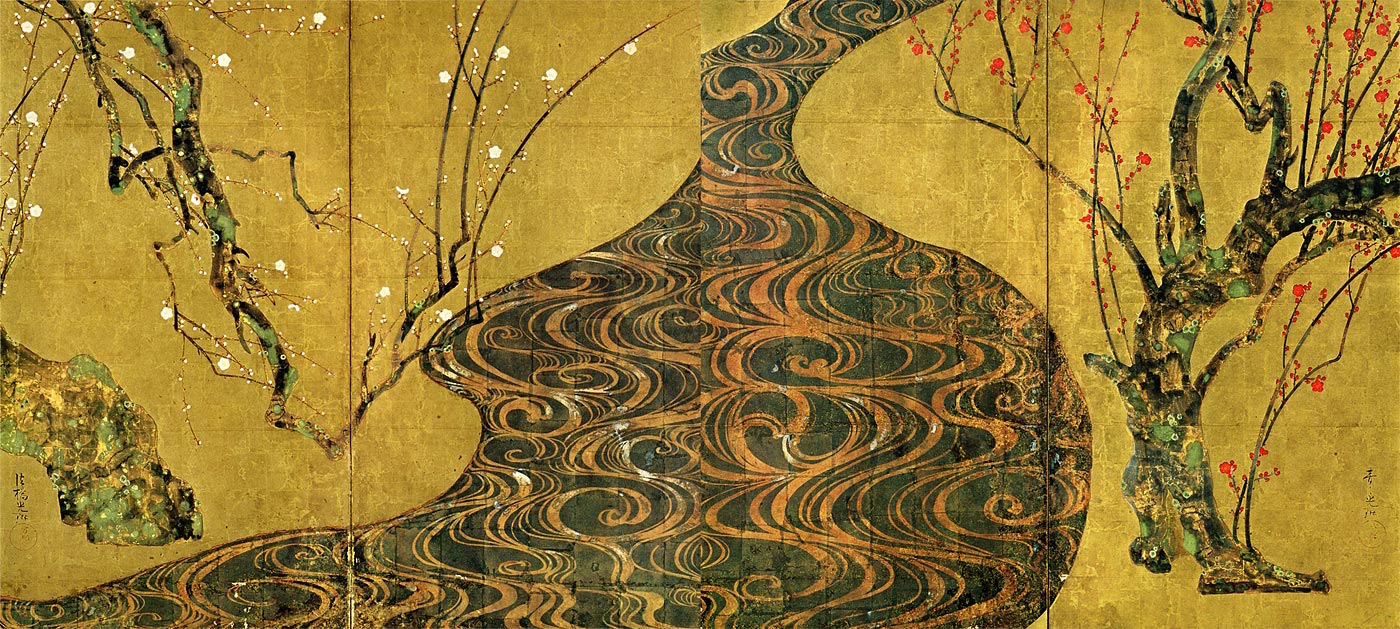The work is one of the best-known paintings in Japan, where it is a registered National Treasure. It resides in the MOA Museum of Art in the city of Atami in Shizuoka Prefecture.

The simple, stylized composition of Red and White Plum Blossoms depicts a patterned flowing river with a white plum tree on the left and a red plum tree on the right. The plum blossoms indicate the scene occurs in spring.

The work is undated, but believed to be from Ogata's later period, and probably one of his final works.Based on evidence such as the signature, technique, and composition, art historian Yūzō Yamane dates the work to 1714 or 1715, just before the artist's death. The seal Hōshuku appears on both screens, but each has a different signature: Hokkyō Kōrin on the left and Sei Sei Kōrin on the right, the latter a signature he began to use after he left Edo, which he visited between 1704 and 1709.
It is in coloured pigments on paper placed on a pair of two-panel byōbu folding screens. Each screen measures 156.5 × 172.5 centimetres (61.6 × 67.9 in). Kōrin achieved the mottling texture on the trees using tarashikomi, a technique in which the painter applies a second layer of pigment or ink before the first layer has dried. The work is considered exemplary of the Rinpa school that Kōrin cofounded.

Square lattice patterns throughout the composition have led to the assumption the painting was made with a lower layer of silver and gold leaf. The lower layers of the painting have a gold colour that was assumed to have been achieved with gold leaf. XRF analysis has shown only organic pigments mixed with a small amount of gold. The black in the painting has been assumed to be either silver leaf that has blackened from exposure to sulphur, or blue pigment that has blackened as the azurite in the pigment has come off. Again, XRF imaging has found only organic dyes. Analysis of the trees has been inconclusive, but found that they were painted with pigments likely made with the minerals cinnabar and calcite, as well as organic pigments elsewhere, such as in the buds.
According to wikipedia





![[HONORARY DOCTORATE OF RECORD FOR PRACTICE AND EMPIRICAL RESULTS – 2017] LY THI MAI (HO CHI MINH CITY, VIETNAM)](https://aseanrecords.world/wp-content/uploads/2024/04/0_16-27_jpg_751-218x150.jpg)








